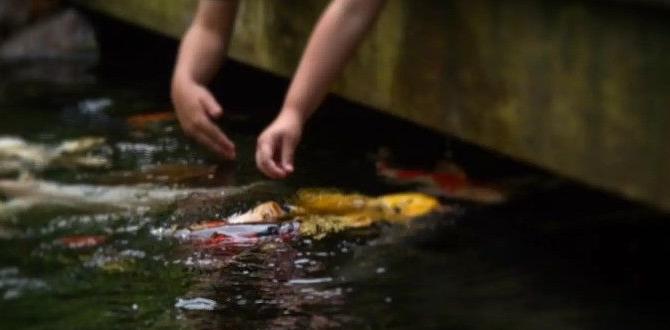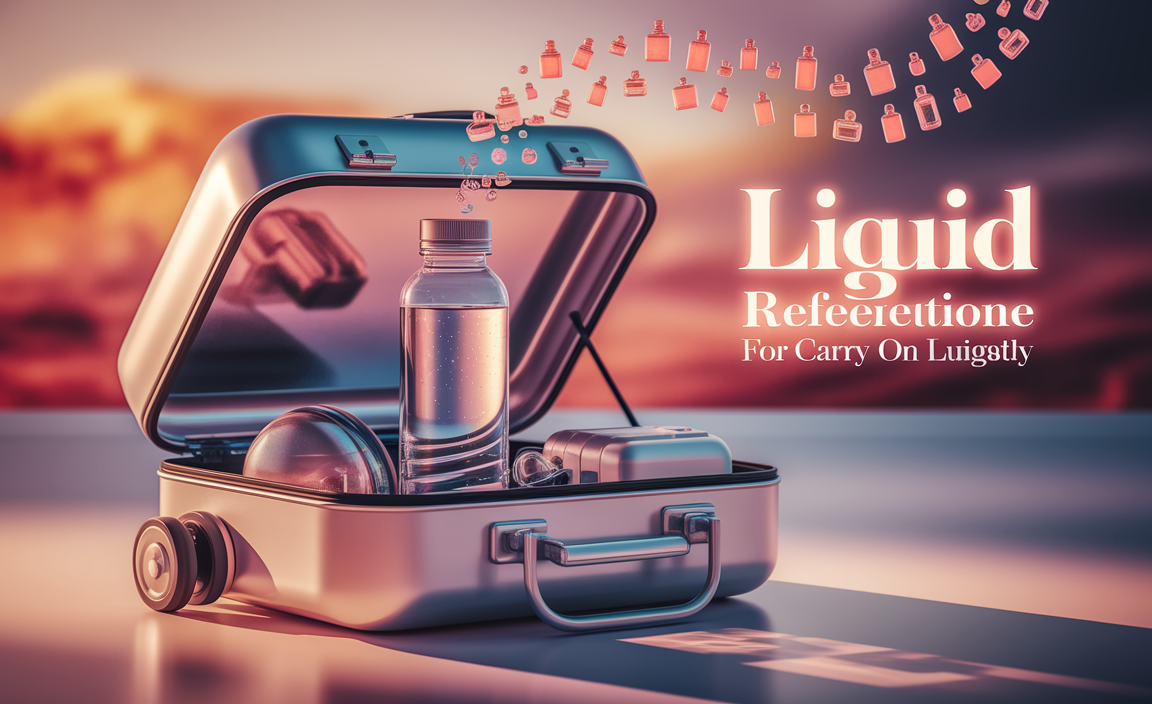Discover the top exotic islands in Hawaii perfect for backpackers seeking adventure on a budget. This guide highlights Oahu, Maui, Kauai, and the Big Island for incredible experiences like hiking, surfing, and cultural immersion, all while offering great value for savvy travelers.
Dreaming of a Hawaiian adventure without breaking the bank? The Aloha State is more than just luxury resorts; it’s a paradise brimming with stunning natural beauty and vibrant local culture, perfect for backpackers. While some islands might seem exclusive, many offer incredible experiences that are surprisingly affordable and accessible. Planning a trip that balances budget with unforgettable experiences can feel overwhelming, but it doesn’t have to be. This guide is designed to help you navigate Hawaii’s most exotic islands, focusing on what backpackers truly need: adventure, affordability, and authentic experiences. Let’s explore how you can make your Hawaiian dream a reality, step by step.
Hawaii for the Adventurous Backpacker: Beyond the Brochures
Hawaii conjures images of pristine beaches and luxurious getaways. However, the true magic of these islands often lies in their rugged landscapes, hidden waterfalls, and the spirit of aloha shared by locals. For backpackers, this means opportunities for incredible hikes, surfing lessons, exploring volcanic wonders, and immersing yourself in Polynesian culture – all without needing a five-star budget. The key is knowing where to look and how to travel smart.
Choosing Your Exotic Hawaiian Island Adventure
Hawaii is an archipelago, and each island offers a distinct flavor. For backpackers, some islands naturally lend themselves to more adventurous and budget-friendly travel. While the terms “exotic” and “backpacker-friendly” might seem contradictory, Hawaii offers a unique blend. You can find untouched natural beauty, exciting outdoor activities, and opportunities to connect with the local way of life on islands that also cater to travelers looking for value.
Oahu: The Gathering Place – More Than Just Waikiki
Oahu is often seen as the most developed island, home to Honolulu and Waikiki. However, venture beyond the tourist hubs, and you’ll discover Oahu’s wilder side, brimming with history, incredible surf spots, and challenging hikes. It’s often the most budget-friendly to fly into, with extensive public transportation options.
Why it’s great for backpackers:
Affordable accommodation options, including hostels and budget guesthouses.
Extensive bus system (TheBus) making it easy to get around without a car.
World-famous surf breaks on the North Shore.
Rich historical sites like Pearl Harbor.
Abundant hiking trails offering breathtaking views.
Must-do exotic experiences:
Hike to the summit of Diamond Head for panoramic views.
Explore the lush trails and waterfalls of Manoa Valley and Lyon Arboretum.
Witness the legendary waves of the North Shore (seasonal).
Visit Iolani Palace, the only royal palace in the United States.
Snorkel at Hanauma Bay Nature Preserve (reservations often required).
Budget tips: Utilize TheBus, pack lunches for hikes, and explore local food trucks for affordable eats (like garlic shrimp!).
Maui: The Valley Isle – Nature’s Playground
Maui seamlessly blends stunning beaches with dramatic volcanic landscapes and lush rainforests. While it has a reputation for luxury, its natural wonders are accessible to all. Backpackers can find adventure in its diverse terrains and experience its unique aloha spirit away from the resort areas.
Why it’s great for backpackers:
Incredible natural diversity: pristine beaches, Haleakala volcano, and the Road to Hana.
Opportunities for camping and staying in more rustic accommodations.
Amazing snorkeling and diving spots.
Challenging hikes with rewarding vistas.
Must-do exotic experiences:
Drive the iconic Road to Hana, stopping at waterfalls and scenic lookouts.
Witness a sunrise or sunset from the summit of Haleakala National Park (reservations needed for sunrise).
Hike through ʻIao Valley State Monument.
Go snorkeling or diving at Molokini Crater.
Explore the surf town of Paʻia.
Budget tips: Consider camping permits for Haleakala or Koki Beach. Pack snacks and water for the Road to Hana as services are limited. Look for hostels in Kihei or Paʻia.
Kauai: The Garden Isle – Untamed Paradise
Kauai is the oldest of the main Hawaiian Islands, and its dramatic cliffs, emerald valleys, and cascading waterfalls have earned it the nickname “The Garden Isle.” It’s a haven for nature lovers and offers a more laid-back, off-the-beaten-path experience.
Why it’s great for backpackers:
Stunning, dramatic natural landscapes like the Na Pali Coast and Waimea Canyon.
Abundance of hiking trails, from easy walks to demanding multi-day treks.
Fewer large resorts, leading to a more authentic feel.
Great for kayaking, snorkeling, and exploring hidden beaches.
Must-do exotic experiences:
Hike portions of the Kalalau Trail along the breathtaking Na Pali Coast (permits required for overnight stays and often for day hiking beyond certain points).
Explore Waimea Canyon, the “Grand Canyon of the Pacific.”
Kayak the Wailua River to the Fern Grotto.
Relax on Polihale Beach or Secret Beach.
Visit the charming towns of Hanalei and Kapaʻa.
Budget tips: Camping is an excellent budget option on Kauai. Pack out what you pack in to preserve its pristine nature. Renting a car is often beneficial here, but consider carpooling or staying in central locations to maximize savings.
Island of Hawaii (The Big Island): Land of Fire and Ice
The Big Island is a land of incredible contrasts, boasting active volcanoes, black sand beaches, snow-capped mountains (in winter), and lush rainforests. Its sheer size offers endless exploration opportunities for the adventurous spirit.
Why it’s great for backpackers:
Home to the active Kīlauea volcano at Hawaiʻi Volcanoes National Park.
Diverse landscapes: lava fields, tropical rainforests, and stargazing opportunities at Mauna Kea.
Unique black, green, and even red sand beaches.
Excellent snorkeling and diving, especially with manta rays.
Must-do exotic experiences:
Explore Hawaiʻi Volcanoes National Park: see lava flows (if active and safe to view), steaming vents, and the caldera.
Snorkel or dive with manta rays at night near Kona.
Visit Punaluʻu Black Sand Beach, often frequented by Hawaiian green sea turtles.
Drive the Saddle Road for access to Mauna Kea and Mauna Loa.
Explore the historic town of Hilo and its numerous waterfalls.
* Budget tips: Camping in Volcanoes National Park is very affordable. Load up on groceries before heading to more remote areas. Even without a car, you can explore some areas via tours or local buses, but a car offers more flexibility.
Essential Backpacking Gear for Hawaii
Packing light is crucial for backpackers, but you still need to be prepared for Hawaii’s diverse climates and activities. Focus on versatile, durable, and quick-drying items. Comfort and practicality are key, especially if you’re planning on using items for personal care during long travel days or exploring.
Clothing Essentials
Think light layers, moisture-wicking fabrics, and sun protection.
- Lightweight, quick-drying hiking shorts or pants.
- Moisture-wicking t-shirts and tank tops.
- A long-sleeved shirt for sun protection and cooler evenings.
- A lightweight, waterproof rain jacket (essential for rainforests and sudden showers).
- Swimwear (at least two if possible, so one can dry).
- A comfortable pair of walking shoes or trail runners.
- Water-friendly sandals or flip-flops.
- A wide-brimmed hat for sun protection.
- Lightweight socks (moisture-wicking is best).
Gear and Gadgets
These items will enhance your comfort and safety.
- Backpack (40-60 liters is usually sufficient).
- Daypack for hikes and daily excursions.
- Reusable water bottle (stay hydrated and reduce plastic waste).
- Travel towel (quick-drying microfiber type).
- Headlamp or small flashlight (useful for early morning hikes or camping).
- Basic first-aid kit.
- Sunscreen (reef-safe varieties are recommended to protect marine life).
- Insect repellent.
- Portable power bank for charging devices.
- Camera or smartphone for capturing memories.
- Dry bag for protecting electronics and valuables near water.
Personal Care Considerations
For seamless travel, especially for longer trips or those with specific needs, having convenient personal care items is vital. This ensures you can focus on the adventure without worry.
- Travel-sized toiletries.
- Any personal medications.
- For those needing them: adult diapers or pull-up underwear are discreet and reliable for long travel days, explorations, or unexpected situations. Look for highly absorbent, comfortable options designed for active wear. Brands offering breathable materials can enhance comfort in Hawaii’s warm climate.
- For families traveling with young children: child diapers and wipes are essential. Consider compact, travel-friendly packs for easy storage in your daypack.
Budget-Friendly Accommodation and Transport Tips
Making your Hawaiian adventure affordable is all about smart choices in where you stay and how you get around.
Accommodation Avenues
While Hawaii isn’t known for being cheap, hostels and campgrounds are fantastic options for backpackers.
- Hostels: Found primarily on Oahu and Maui, hostels offer dorm-style rooms and common social areas, perfect for meeting other travelers. They are a great way to save significant money on lodging.
- Campgrounds: Many islands offer state or county campgrounds with basic facilities. Some national parks, like Hawaiʻi Volcanoes National Park, also have excellent camping options. Permits are almost always required and should be booked well in advance, especially during peak seasons. Check with the Hawaii Department of Land and Natural Resources for state park information.
- Budget Guesthouses/Vacation Rentals: Look for smaller, locally-owned inns or rooms for rent, especially outside the main tourist hubs.
Navigating the Islands Economically
Transportation costs can add up quickly. Strategic planning can keep them in check.
- Inter-island Flights: Book these flights between islands in advance to get the best fares. Southwest Airlines and Hawaiian Airlines are the primary carriers.
- Island by Island Exploration: It’s often more cost-effective to pick one or two islands to focus on to minimize inter-island travel costs and time.
- Public Transportation: Oahu has an excellent public bus system (TheBus). While other islands have limited bus services, they can be a viable option for reaching certain areas if you have flexibility.
- Car Rentals: If you need a car, book well in advance, especially for Maui and Kauai. Consider smaller economy cars, and look for deals. Sometimes booking a car for just a few days on an island can be more cost-effective than having one for your entire stay.
- Ride Sharing & Carpooling: Services like Uber and Lyft are available in populated areas. On islands like Kauai or the Big Island, consider looking for travel buddies in hostels or online forums to share rental car costs.
Sample Itinerary: A Week on Kauai (Budget Backpacker)
This is a sample to give you an idea of how to structure a trip focusing on adventure and value.
| Day | Island | Morning Activity | Afternoon Activity | Evening Activity | Accommodation Suggestion |
|---|---|---|---|---|---|
| 1 | Kauai | Arrive in Līhuʻe, pick up rental car (booked in advance). Drive to Waimea. | Explore Waimea Canyon State Park. Hike a portion of the Canyon Trail. | Camp or find a budget guesthouse in the Waimea area. Cook dinner at campsite. | Campground or Budget Inn (Waimea) |
| 2 | Kauai | Drive to the Kalalau Lookout for views of the Na Pali Coast. | Hike the first 2 miles of the Kalalau Trail to Hanakapiʻai Beach (obtain necessary permits if available/required). | Drive to Hanalei. Stay in a hostel or campground near Hanalei Bay. | Hostel or Campground (Hanalei) |
| 3 | Kauai | Kayak or paddleboard on the Hanalei River. Explore Hanalei Town. | Relax and swim at Hanalei Bay. Visit the Kīlauea Lighthouse. | Enjoy a local food truck dinner in Hanalei. | Hostel or Campground (Hanalei) |
| 4 | Kauai | Drive to the Wailua River. Take a boat tour or kayak to Fern Grotto. | Hike to ʻOpaekaʻa Falls and explore the Wailua Falls area. | Check into a budget accommodation in Kapaʻa. | Budget Guesthouse or Hostel (Kapaʻa) |
| 5 | Kauai | Optional: Take a surf lesson at Poʻipū Beach. | Explore the South Shore: visit Spouting Horn, relax at Poʻipū Beach. | Experience a local luau (look for more affordable community options). | Budget Guesthouse or Hostel (Kapaʻa) |
| 6 | Kauai | Drive to Polihale State Park for rugged beach scenery (check road conditions). | Explore the west coast, look for petroglyphs. | Return to Līhuʻe area, prepare for departure. | Budget Hotel (Līhuʻe) |
| 7 | Kauai | Last minute souvenir shopping if time permits. | Depart from Līhuʻe Airport (LIH). | N/A | N/A |
Safety and Sustainability for Backpackers
Traveling responsibly ensures the preservation of Hawaii’s natural beauty and cultural heritage for future generations. It also enhances your own experience.
Responsible Travel Practices
- Leave No Trace: Pack out everything you pack in. Stay on marked trails to prevent erosion.
- Respect Wildlife: Admire animals from a distance. Never feed them. Be aware of the protected status of sea turtles and monk seals.
- Conserve Water: Hawaii’s freshwater resources are precious. Be mindful of your usage.
- Cultural Sensitivity: Learn a few basic Hawaiian phrases. Be respectful of local customs and sacred sites. Ask permission before taking photos of people.
- Support Local Businesses: Eat at local eateries, buy from local artisans, and choose locally-owned tour operators.
Safety First
Hawaii is generally safe, but it’s wise to take precautions.
- Ocean Safety: Be aware of ocean conditions. Heed warning signs and lifeguard instructions. Undertows and strong currents can be dangerous, especially on less populated beaches.
- Hiking Safety: Hike with a buddy, inform someone of your plans, and carry plenty of water and snacks. Many park websites, like Kauai’s National Park Service pages, offer specific safety advice.
- Sun Protection: The Hawaiian sun is strong. Wear sunscreen, a hat, and protective clothing. Stay hydrated.
- Vehicle Security: Never leave valuables visible in your rental car, especially on secluded beaches or trailheads.
- Emergency Preparedness: Know the local emergency number (911) and be aware of your surroundings.





